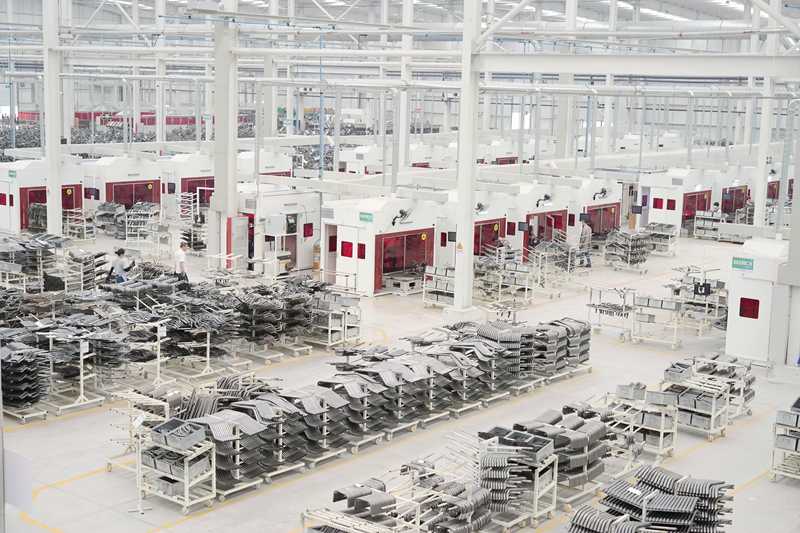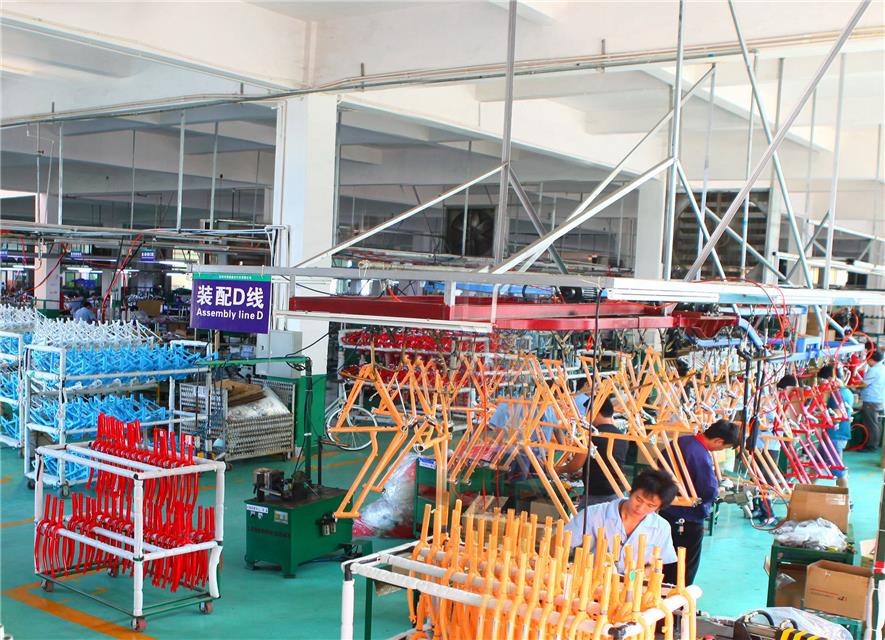As the demand for green and sustainable transportation grows, electric bicycles (e-bikes) have emerged as a popular solution worldwide. Among these technologies, laser pipe cutting machines, pipe bending machines, and laser welding robots play critical roles. This article explores their functions and significance in the production process of electric bicycles, from raw material processing to frame assembly.
1. Precision Foundation: Laser pipe Cutting Machines
The frame is the backbone of any electric bicycle. Laser pipe cutting machines are crucial in this phase of production.
High Precision Cutting
Laser pipe cutting machines, on the other hand, use high-powered, focused laser beams to cleanly and precisely cut metal tubing according to digital CAD designs. This allows for tolerances as tight as ±0.1 mm, ensuring that each component will fit together seamlessly during assembly.
Complex Geometries and Customization
Modern electric bicycle designs are often far from conventional. Frames may include curved or angled cuts, slots, or holes to accommodate motors, wiring harnesses, and battery casings. Laser pipe cutting machines excel at executing complex geometries, including angled cuts, notches, and intricate patterns—capabilities that would be extremely difficult or impossible with manual tools.
Increased Efficiency
Laser pipe cutting machine is not only more accurate but also significantly faster than manual or traditional methods. CNC (Computer Numerical Control) integration allows for automated batch production with minimal operator intervention. This streamlines the workflow, reduces labor costs, and boosts overall production capacity—critical in an industry where time-to-market is essential.

2. Structural Shaping: Pipe Bending Machines
Once the metal pipes are cut to precise lengths and profiles, they must be shaped to conform to the final design of the e-bike frame. This is where pipe bending machines come into play. These pipe bending machines bend metal pipes into curves, angles, and complex three-dimensional shapes without compromising the material's integrity.
Maintaining Structural Integrity
One of the main challenges in pipe bending machine is avoiding deformation, wrinkling, or collapse of the pipe wall. Modern pipe bending machines are equipped with advanced features such as mandrels and wiper dies that support the internal and external surfaces of the pipe during bending.
Automation and Precision
Like laser pipe cutting machines, pipe bending machines often employ CNC systems that control the angle, radius, and orientation of each bend with great accuracy. Each bend must precisely match the frame design so that subsequent welding and assembly operations proceed without errors or misalignment.
Design Versatility
As the e-bike market becomes more segmented, with city bikes, mountain bikes, cargo bikes, and foldable bikes, manufacturers require greater versatility in their production lines. CNC-controlled pipe bending machines allow for rapid switching between different frame designs and specifications. This versatility reduces downtime and improves responsiveness to market trends and consumer demands.

3. Seamless Assembly: Laser Welding Robots
Welding is a critical step, as it determines the strength, appearance, and longevity of the electric bicycle. Traditionally performed by skilled human welders, this task has now largely transitioned to laser welding robot systems.
Consistent and High-Quality Welds
Laser welding robots use concentrated laser beams to fuse metal components with minimal heat input. This results in narrow, deep welds with very small heat-affected zones (HAZ). The precision of laser welding robot ensures that each weld is consistent in depth, width, and quality—eliminating human variability and reducing the likelihood of defects such as porosity, warping, or cracking.
Speed and Productivity
Automated laser welding significantly speeds up the production process. laser welding robots can work continuously, with minimal breaks and without fatigue. They can also perform multiple welds in rapid succession, guided by pre-programmed paths from CAD/CAM files. This reduces cycle time and increases overall throughput, which is essential for large-scale production of electric bicycles.
Improved Aesthetics and Durability
In consumer products like electric bicycles, appearance is almost as important as performance. Laser welding produces clean, smooth seams that often require little to no post-processing such as grinding or polishing. The resulting joints are not only strong but also visually appealing, which enhances the overall quality perception of the finished product.
Safety and Environmental Benefits
Laser welding robot produces fewer fumes, less noise, and lower energy consumption compared to traditional arc welding techniques. Combined with robotic automation, this laser welding robot makes the production environment safer for workers and more sustainable.
Conclusion: A Future-Oriented Production Model
The production of electric bicycles is a complex and precision-driven process that increasingly relies on advanced automation and digital integration. Laser pipe cutting machines, pipe bending machines, and laser welding robots each play a vital role in ensuring high efficiency, precision, and quality in modern e-bike manufacturing.

